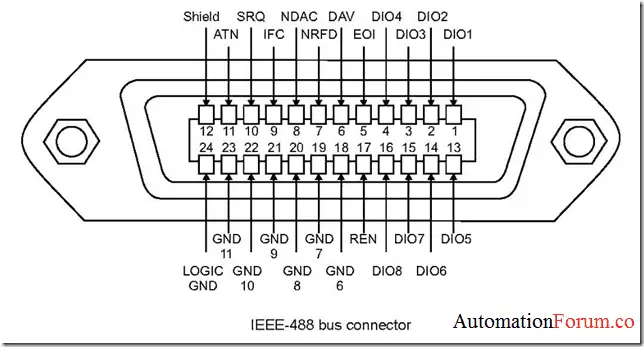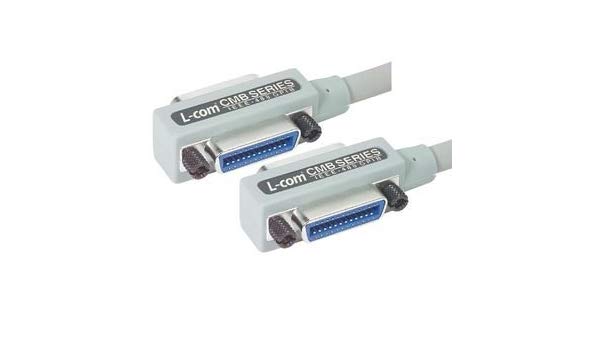Short-range digital communications 8-bit parallel multi-master interface bus specification from IEEE Standards.

Image from: https://automationforum.co/
What is IEEE-488?
IEEE-488 is an Institute of Electrical and Electronics Engineers (IEEE) standard for a parallel interface developed by Hewlett-Packard that is used for connecting computers to measurement sensors and test equipment for automatic data acquisition in a laboratory or industrial setting.
Examples of such equipment include signal generators, frequency counters, voltmeters, and temperature sensors.
How IEEE-488 Works
IEEE 488, also known as the General-Purpose Interface Bus (GPIB), provides high-speed parallel communication using a 24-pin connector. An IEEE 488 cable generally has eight single wires for data transfer, eight twisted-pairs for interface handshaking and management, and a drain (ground) wire, all enclosed in an insulating protective jacket.
This configuration provides eight bidirectional channels for transmitting 1 byte (8 bits) of information at a time, at a maximum bus speed of 1 Mbps using tristate drivers. You can chain together up to 15 devices for a total length of 20 meters, with no more than three connectors stacked and no more than 2 meters between adjacent devices.

The master device acts as a controller that determines which device can transmit data over the bus at any given time, while the other devices are placed in standby mode. Only one device can transmit signals on the bus at any given time, but multiple devices can receive those signals.
IEEE-488 used as a computer interface
HP’s designers did not specifically plan for IEEE 488 to be a peripheral interface for general-purpose computers; the focus was on instrumentation. But when HP’s early microcomputers needed an interface for peripherals (disk drives, tape drives, printers, plotters, etc.), HP-IB was readily available and easily adapted to the purpose.
HP computer products which used HP-IB included the HP series 80, HP 9800 series, the HP 2100 series, and the HP 3000 series. HP computer peripherals which did not utilize the RS-232 communication interface often used HP-IB including disc systems like the HP 7935. Some of HP’s advanced pocket calculators of the 1980s, such as the HP-41 and HP-71B series, also had IEEE 488 capabilities, via an optional HP-IL/HP-IB interface module.
Other manufacturers adopted GPIB for their computers as well, such as with the Tektronix 405x line.
The Commodore PET (introduced 1977) range of personal computers connected their peripherals using the IEEE 488 bus, but with a non-standard card edge connector. Commodore’s following 8-bit machines utilized a serial bus whose protocol was based on IEEE 488. Commodore marketed an IEEE 488 cartridge for the VIC-20 and the Commodore 64. Several third party suppliers of Commodore 64 peripherals made a cartridge for the C64 that provided an IEEE 488-derived interface on a card edge connector similar to that of the PET series.
Eventually, faster, more complete standards such as SCSI superseded IEEE 488 for peripheral access.
Protect cabling from EMI
If your industrial environment is dusty or has high levels of electromagnetic interference (EMI) from motors, generators, or other heavy equipment, you can obtain special shielding covers to protect your IEEE 488 connectors. You can use switchboxes to alternate several industrial sensors on a single IEEE 488 cable.